
First and Only Weekly Online Fanzine Devoted to the Life & Works of Edgar Rice Burroughs
Since 1996 ~ Over 10,000 Web Pages in Archive
Volume 2727
ERB ECLECTICA
ERB-Date: 2009.08


 |
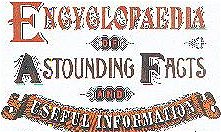 |
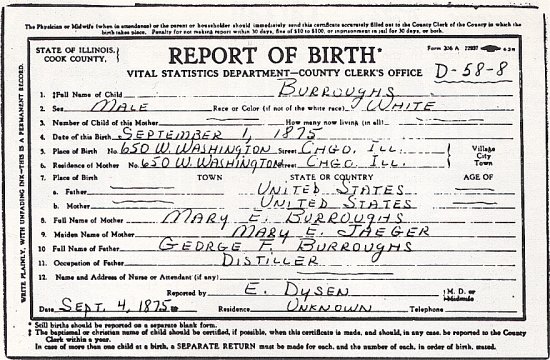
click
Birth Certificate of Edgar Rice Burroughs
Note: His mother's maiden name should be Zieger and his father's middle initial should be "T" for Tyler.
Are Science Fiction Franchises As Popular As Religion?
July 29, 2009 ~ io9.com
If you don't worship Star Trek, then you must worship the Force. But maybe you're a vampire adept, or a member of the Batman congregation? Fans' faith in their franchises gets as intense and bloody as zealots' faith in religion.
The Ancient Books
Like all great religions, the franchises have mysterious histories, preserved in decaying books and obscure pamphlets. The thread that unites all of them is an overarching tale of social outcasts who find holy books that show them the light, and lead them to secret congregations where mystical debates and opinions are exchanged.Almost century-old pulp magazines like Weird Tales and Amazing Stories brought the faith to tiny towns via drugstore displays and dark bookshops. Comic books with stories of the Superman and the Batman converted the faithful four generations ago. Stories of Conan, John Carter of Mars, and Flash Gordon were passed around and taught the agnostic about a world where science triumphed, the stars promised endless new worlds to explore, and plainfaced secretaries could transform into superpowered, beautiful Amazons out to save the world.
Converted by these ancient books, the earliest fans began to build the franchises that would transform their visions of other worlds into the pillars of new belief systems.
The Crusades
Now, how could these faithful convert the masses? Surely not with horses and swords. This crusade would use the tools of pop and new media. And by new media, I mean movies and television. The heroes and monsters who began life on the pages of cheap magazines became the technicolor astronauts of movie serials like Flash Gordon, Universal's monster movies, and later of mind-bending 1950s scifi movies like Forbidden Planet and The Day The Earth Stood Still.A Vast Congregation Breaks Into Sects . . .
Apocrypha and Idol Worship . . .
Holy Wars . . .
Religion As Franchise . . .
In the end, religious fervor is good for the pocketbook of the culture industry. The more we worship, the more we are willing to pay for action figures, for DVD box sets, for expensive reissues and signed first editions. These things are trinkets for our shrines, outward signs of our devotion. And like all religious objects they are dosed with a symbolic meaning that goes way beyond their unbroken plastic seals. They ward off what hurts us in the world. They promise better things to come.More>>>
Michael Jackson s Pet Chimp Bubbles To Appear In A Commercial
(This reprint is a parody from TheSpoof.com. It is entirely fictitious.)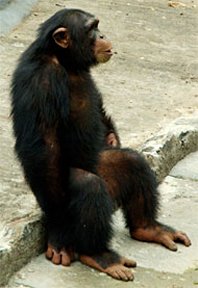
NEW YORK CITY - Michael Jackson's pet chimpanzee Bubbles has just been signed by the famed William Morris Talent Agency. The 28-year-old chimpanzee will be appearing in a commercial for Chiquita Bananas. Aspen Zumahorn the director of the commercial said that Bubbles will be playing the part of Tarzan and Jane's pet chimp Cheeta. In the commercial Bubbles will be shown swinging through the Zimbabwean jungles while holding a monkey wrench in his mouth, a Chiquita banana in his left hand, and a provocatively revealing 8 by 10 glossy photograph of Jane in his right hand.Zumahorn said that Bubbles will not be using a stunt monkey for any of his stunts. He added that as Bubbles is swinging from vine to vine Zimbabwean natives (actual natives not actors) will be shooting poison darts at him in an attempt to capture him and sell him to a traveling Norwegian Circus. In the commercial Johnny Depp will be portraying Tarzan and Lindsay Lohan will be playing the part of Jane. Both actors will be required to learn Zimbabwean, at least a little conversational Zimbabwean.
Simbad Quackenbush, who is Bubbles' trainer and guardian, said that the Michael Jackson Estate will receive $807,000 for Bubbles' participation in the commercial. Quackenbush said tongue-in-cheek that Bubbles will do very well in the monkey business. He was asked how Bubbles was getting along. He stated that Bubbles is doing okay. Quackenbush remarked that Bubbles is still not eating much of his monkey food. But he adds that hopefully before too long Bubbles will be back to his old self and start monkeying around again.
Bubbles and Michael were very close, in fact one of the Neverland maids, Mascarita Escobedo, 39, confided that at times Michael and Bubbles would both use the same toothbrush, lipstick, and underwear. Escobedo said that MJ and Bubbles used to sit and watch old Tarzan movies together. She said that Michael once told his best friend Elizabeth Taylor that Bubbles had actually memorized every single monkey sound that Cheeta made in all of the 49 Tarzan movies. Michael's sister LaToya even revealed for the very first time that Bubbles actually played the tambourine and the cow bell on several songs on Michael's 'Bad' album.
SIDENOTE: Mickey Dolenz of the 60s band The Monkees has been signed to write the background music for the Chiquita banana commercial.
The Merriam-Webster Word of the Day for July 11, 2009
weird \WEERD\ adjective
1 : of, relating to, or caused by witchcraft or the supernatural
*2 : of strange or extraordinary character : odd, fantastic
Example Sentence:
"Again was I suddenly recalled to my immediate surroundings by a repetition of the weird moan from the depths of the cave." (Edgar Rice Burroughs, A Princess of Mars)
Did you know?
You may know todays word as a generalized term describing something unusual, but "weird" also has older meanings that are more specific. "Weird" derives from the Old English noun "wyrd," essentially meaning "fate." By the 8th century, the plural "wyrde" had begun to appear in texts as a gloss for "Parcae," the Latin name for the Fates -- three goddesses who spun, measured, and cut the thread of life. In the 15th and16th centuries, Scots authors employed "werd" or "weird" in the phrase "weird sisters" to refer to the Fates. William Shakespeare adopted this usage in Macbeth, in which the "weird sisters" are depicted as three witches. Subsequent adjectival use of "weird" grew out of a reinterpretation of the "weird" used by Shakespeare.
The Top Ten Princesses of Sci-Fi and Fantasy
Move over, Disney! When it comes to princesses, the sci-fi / fantasy genre has you completely outnumbered, outgunned, and outdressed.
SciFiSquad.com ~ July 8, 2009
1. Princess Leia Organa (Star Wars)
2. Princess Sorsha (Willow)
3. Dejah Thoris (Princess of Mars)
In comparison to Princess Leia, Dejah Thoris didn't have nearly as much fun. She's constantly kidnapped and abused by her fellow Martians, but she's no simpering Edwardian. She manages to hold her own, and gets to have a bit of a smackdown when she rescues John Carter during a duel. Given the time period, it practically makes her Wonder Woman.
4. Xena (Xena: Warrior Princess)
5. Princess Buttercup (The Princess Bride)
6. Arwen and Eowyn (Lord of the Rings)
7. Princess Aura (Flash Gordon)
8. Princess Nuala (Hellboy 2: The Golden Army)
9. Princess Vespa (Spaceballs)
10. Wonder Woman
BARSOOM ART

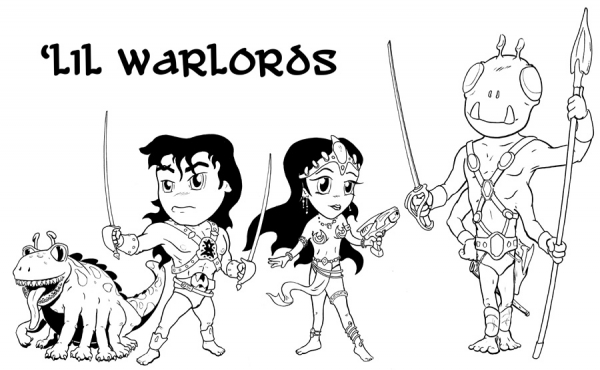
James Ratcliffe
Lansdale uses his East Texas sensibilities
MySanantonio.com ~ June 28, 2009
Joe Lansdale may be as interesting as the fiction he writes. A martial arts master who creates often bizarre stories mixing horror, crime, science fiction and Western genres, he's also got a keen social conscience born of his East Texas upbringing. . . . he worked a string of dead-end jobs digging ditches, tarring roofs, bouncing in nightclubs, toiling in a mobile home factory before the writing gig paid off. He's an Obama fan angered by what he sees as the intolerance of organized religion.Lansdale's novels are ultra-violent, fast-paced and fun, but on closer inspection reveal a mix of influences from the pulpy to the literary. The author's mother sold World Book Encyclopedias and presented young Joe one birthday with a collected Shakespeare, a Tarzan book and the stories of Rudyard Kipling.
"My mother wanted me to be a reader," he said. "She was a reader. Even though she had an 11th-grade education, she was curious about all kinds of things archaeology, anthropology. When I discovered (Tarzan author) Edgar Rice Burroughs, I went nuts. I absolutely had to be a writer. I was the right age, at the right time."
His mother also sparked a social conscience that brings a Mark Twain echo to Lansdale's writing. Once at the Cozy Theater in his hometown of Gladewater, a young Lansdale spied a stairway that led up the back for black movie patrons. "I asked my mom, 'Why are all these people going in back there?'?" Lansdale said. "She told me, 'I can't explain it. It isn't right, but it will change someday.' I always remembered that."
With some 30 books to his credit, plus screenplays and comic books he's penned, Lansdale, who writes three hours a day, five days a week, may be a model of writerly discipline and persistence. "I lived that childhood dream of growing up to be exactly what you want to be, do exactly what you want to do," he said. "I don't feel I've missed any boats." ~ More>>>
Note: Joe Lansdale completed ERB's unfinished manuscript:
Tarzan: The Lost Adventure. See: ERB C.H.A.S.E.R. 0733
Hello and Welcome to BBC Xtra English!
Today John and Reda talk about Tarzan, lord of the jungleWhat do you think of the Tarzan stories? Write to us in English!Even though he did not exist, the story of Tarzan is loved by many people, young and old, from all around the world. His story has been translated into many languages and cartoons and films were also made about this mythical hero. But some parts of the stories about Tarzan were not that great - they included a lot of prejudices and stereotypes about Africans. This is why a new Tarzan museum has just opened in France. Stephane Martin, the museum's curator says that they have opened it to try and explode the myth that Africa is untamed or backward. Some Tarzan stories have described Tarzan in other continents. For example one Arab version of a Tarzan story described Tarzan as a hero of the Arab people. However these were unauthorised versions of the Tarzan story and the original Tarzan will always be known as 'Lord of the Jungle'.
Tarzan of the Apes by Edgar Rice Burroughs (Digested Version)
Condensed by John Crace
The Guardian ~ June 20, 2009
"Dash it," said John Clayton, Lord Greystoke. "These beastly Europeans mistreat the blacks even more than we do. There will be a mutiny, I'll be bound.""Oh John, my love," said Lady Alice, bursting into uncontrollable sobs as the mutineers landed them ashore. "What's to become of us now we've been stranded in this savage jungle?"
Clayton stiffened his upper lip, quickly fashioning a castle out of fallen lumber before shooting a pride of lions for dinner. The months passed slowly, and Alice had abandoned hope of rescue when a large 300lb ape battered at the door. "Faith, we are doomed," she cried, swooning in terror.
"'Tis a shame she never recovered to see our baby," Clayton murmured to himself, stretching a panther skin into a lampshade and looking at his time-piece. "Gosh, is that the time? I'd better conveniently expire myself."
Kala had dropped her baby, and her shoulders heaved with anthropoid despair. "Never mind" said Kerchak, the great ape, handing over the hairless creature they had found in the abandoned castle. "Have this one instead."
Tublat did not like the simple boy thing his wife had brought home. Yet Kala loved her Tarzan dearly, and as the years slid by he blossomed into a superior intelligence, effortlessly slaughtering every animal he encountered with his bare hands and swinging from tree to tree with muscular, film-star panache.
Prowling through the jungle one day, Tarzan came upon an abandoned castle. He did not realise the desiccated skeletons were his parents and so paid them scant attention. Instead he picked up a book. What were these strange markings? What did "N is for Negro" mean? Within 20 minutes Tarzan had taught himself to read and write.
Bolgani the Gorilla interrupted his learning; within minutes the pair were locked in mortal combat. The battle was fierce. Bolgani breathed his last and Tarzan's head was barely attached, hanging by the thread of his jugular vein.
"Oh, poor Tarzikins," Kala wept, drawing him to her hairy breasts. Tublat hollered with rage. How he loathed his adopted son! He smote him hard, but Tarzan avoided his smiting and twisted his jugular vein around Tublat's throat. "Never underestimate the Oedipus complex," he laughed.
Tarzan subjugated every beast in the jungle and lorded over the stupid black natives with his good looks and cunning; but in his heart he longed to meet his own kind.
"What are we doing here?" Professor Porter enquired.
"How would you know?" his beautiful 19-year old daughter Jane replied. "You are an absent-minded professor."
"We are lost," wailed Clayton, now Lord Greystoke since the disappearance of his uncle. "The sailors have stolen our treasure and left us in the scary jungle. But we have each other!"
Jane sighed. How she yearned for a tall, fit stranger with flowing locks.
Tarzan watched them, enjoying a movement in his breechcloth he did not understand, yet not displeased that his manhood which had hitherto seemed trifling compared to other apes was growing larger. Yet how could he convey his feelings, if he could not talk? He would worry about that later: first he must dig up that large chest those sailors had buried.
The Professor and Clayton were in peril. Tarzan wrote a hurried note for Jane - "Me Tarzan, You Jane, Me Have You" - and raced through the trees to rescue them. Jane's heart leapt when she read the note, but joy turned to despair as a lioness grabbed her arm and dragged her into the undergrowth.
Tarzan grunted with happiness as he slit the lioness's throat and held Jane in his arms. "Oh, Tarzie," she purred, toying with his flowing locks and admiring his diamante necklace. "You could be an Olympic swimmer. Or the lead guitarist with Spinal Tap."
Their bliss was short-lived. A French captain D'Arnot had appeared from nowhere and been abducted by cannibals. "Blast," Tarzan said to himself, "Now I'll have to rescue him as well."
"Oh father, I am so sad," Jane cried. "Tarzie has not returned and our boat has come to take us back to America."
"Je suis inconsolable qu'elle est partie," said Tarzan, having learnt French while he was nursing D'Arnot. "Je will goer en Amerique to find her."
"Je peux teller que vous êtes vraiment un gent, parce que vous ne mangez pas de personnes comme les darkies," D'Arnot replied. "Je bet que vous êtes vraiment le long perdu fils de Lord Greystoke."
"Ha," sneered the wicked Canler. "Now you'll have to marry me as your father has lost the treasure."
"Not so vite," Tarzan hollered, leaping through the branches to rescue Jane from a forest fire. "I have the treasure." Jane's heart raced as Tarzan kissed her passionately. Yet bestiality was one thing, marriage to a simian quite another.
"I am promised to Clayton," she sobbed, "though I do not love him. I cannot have sex with another species, however much I want to."
Tarzan saw Clayton's happiness and could not bear to reveal his true aristocratic identity. "I'm an apeman, I'm an ape ape man, I'm an apeman the apeman," he sang, swinging his way out of the book and into the sequel.
John Crace's Digested Reads appear in G2 on Tuesdays
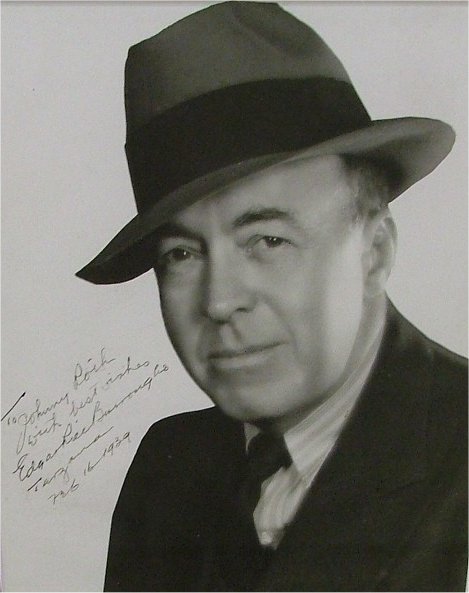
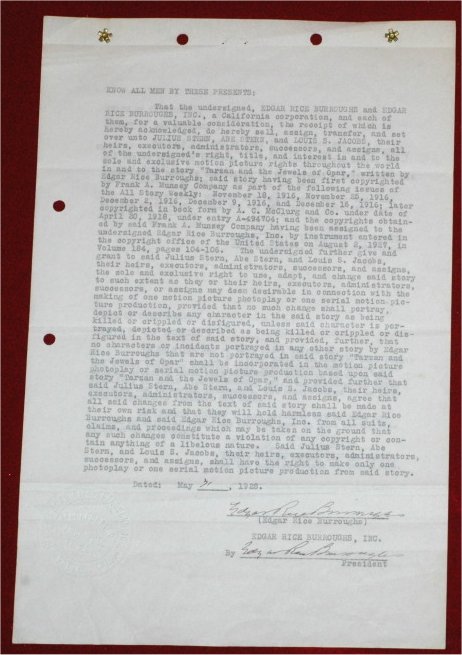
NASA PHOTO JOURNAL
http://photojournal.jpl.nasa.gov/catalog/PIA02342In 1912 Edgar Rice Burroughs published a story entitled "Under the Moons of Mars" (printed in book form in 1917 as A Princess of Mars) in which he referred to the "hurtling moons of Barsoom" (Barsoom being the "native" word for Mars in the fictional account). Burroughs was inspired by the fact that Phobos, having an orbital period of slightly less than 8 hours, would appear from Mars to rise in the west and set in the east only five and a half hours later. (Despite Burroughs' phrase, the outer moon, Deimos, can hardly be said to "hurtle" -- it takes nearly 60 hours to cross the sky from east to west, rising on one day and not setting again for over two more.)
If you could stand on Mars and watch Phobos passing overhead, you would notice that this moon appears to be only about half the size of what Earth's Moon looks like when viewed from the ground. In addition, the Sun would seem to have shrunk to about 2/3 (or nearly 1/2) of its size as seen from Earth. Martian eclipses are therefore dark but not as spectacular as total solar eclipses on Earth can be. In compensation, the martian eclipses are thousands of times more common, occurring a few times a day somewhere on Mars whenever Phobos passes over the planet's sunlit side. Due to the changing geometry of the MGS orbit relative to that of Phobos, the shadow is actually seen in MOC global map images (like in the second figure above) about a dozen times a month.
The shadow of Phobos was seen during the Viking missions in the late 1970s, and in fact one day the shadow was observed to pass right over the Viking 1 lander. The surface of Phobos itself was first imaged by Mariner 9 in 1971, and global coverage was obtained by the Viking orbiters in 1976-80. Phobos was the target of the ill-fated Phobos 1 and Phobos 2 spacecraft, launched by the Soviet Union in 1988. Phobos 2 actually reached Mars in 1989 and obtained a few pictures of the satellite--it also captured the shadow of Phobos cast upon the martian surface using its thermal infrared imager, Termoskan. More recently, the MGS MOC observed the tiny moon four times in August and September 1998.
Was Tarzan the original eco-warrior?
Belfast Telegraph ~ June 16, 2009Moi Tarzan, toi Jane. If you visit the Eiffel Tower this summer, study the steelwork carefully, because you might see, or imagine you see, a familiar figure leaping from strut to strut.
Tarzan of the Apes has taken up residence in the Musée du Quai Branly, the museum near the base of the Eiffel Tower, which is dedicated to non-Western or, as some people insist, "primitive" forms of art.
Paris may seem an unusual place to find the most learned exhibition about Tarzan, also known as Lord Greystoke, ever assembled. He was, after all, an English aristocrat and orphan fostered by socially responsible apes in the African jungle. He was the literary creation of an American writer, Edgar Rice Burroughs, who never bothered to visit Africa (and was so little steeped in African studies that his ape man wrestled tigers as well as lions).
The museum has decided to de-construct the Tarzan myth as part of its mission to explore how popular Western culture understands, or misunderstands, non-Western cultures. Is Tarzan a sexist and a racist who subjugates Jane and treats black men like children? Is he a macho colonialist in a leopard-skin loincloth, rather than a pith helmet? Or was he the first ecological super-hero: a man in recyclable, locally-sourced clothes who fought to protect his pristine jungle from greedy commercial interests?
According to the curator of the exhibition, the celebrated French sociologist and anthropologist Roger Boulay, it depends which Tarzan of the Apes you are talking about. "There is a big difference between the original Tarzan of the Burroughs novels and the culturally impoverished Tarzan of Hollywood movies, starting with silent movies," he told The Independent. "The Burroughs character is complex and eventually speaks 12 languages. The movie character is often a caricature who speaks only in grunts."
Tarzan's first spoken language, in the original novel of 1912, was ape-speak long before scientists discovered that apes do have a language. The exhibition's catalogue contains a fascinating linguistic study of the words used by Tarzan's adoptive ape clan, "the Waziris" (sic). They have 250 words, including several verbs, which are used only in the infinitive, rather like George Orwell's Newspeak. It is worth noting that Tarzan's second spoken language in the original novel was French, learned from a French officer rescued from cannibals. Paris and the Quai Branly does have a legitimate claim to Tarzan after all.
The exhibition, which opens today and runs until 29 September, explores the many links between Tarzan and popular culture, especially the 80-plus Tarzan movies (far more numerous than the Burroughs books). Some faint praise is given to Johnny Weissmüller's series of 12 Tarzan films in the 1930s and 1940s and the indestructible eroticism of some of the early, silent films.
Overall, the exhibition suggests, Burroughs and Tarzan were ill-served by the movies until the British film Greystoke (1984) reverted more or less to the original story. The exhibition includes, however, a sequence from Greystoke in which Tarzan (Christopher Lambert) scampers in a convincingly ape-like way into the bed of Jane (Andie MacDowell). That incident is not in the original book, but eroticism has always been an important part of the Tarzan appeal. The exhibition makes comparisons with King Kong and the persistently engaging myth of the white woman kidnapped by apes.
Jane Parker, a scientist's daughter rescued from marauding apes by Tarzan, is a central figure in the first Burroughs novel Tarzan Of The Apes (1912). She then largely disappears and is replaced by a series of other girlfriends, some tough, some swooning.
The most celebrated chat-up line of modern times "me Tarzan, you Jane" does not appear in any Burroughs book, it transpires. It was first used by Weissmüller, a former US Olympic swimming gold medallist, in the film Tarzan And His Mate in 1934. The exhibition also has a magnificent collection of original plates from Tarzan comic books. These are jumbled, somewhat oddly, with authentic African spears and shields from the museum's own collection and a cuddly-looking stuffed lion.
Tarzan was "invented" by a science-fiction writer from Chicago who hated the modern civilisation that the city represented. Unlike, say, Rudyard Kipling, Burroughs never won acceptance as a great literary figure. The quality of his actual writing is often poor, especially in some of the later books among the 26 Tarzan titles. M. Boulay points out, however, that Burroughs at his best is far more than a mere writer of pot-boilers. His African knowledge was non-existent "but he was interested only in an imaginary Africa, for the needs of his story". His books are adventure stories but they have an intellectual background and purpose. "He explores the implications of the Darwinian theory of a common ancestor between apes and man," M. Boulay said. "He explores the failings of civilisation but also the failings of life in the wild. Long before ecological concerns became common, he has Tarzan defending the natural world against human predators."
Tarzan was an American "super-hero" two decades before Superman, Batman or Spider-Man were first drawn. But he was not "superhuman" or a mutant or dependent on tricksy technology. He gained his power by combining human cunning and wisdom with animal strength and endurance. "To that extent, he is a descendent of [the 18th century French philosopher] Jean-Jacques Rousseau, who Burroughs also studied avidly," M. Boulay said. "Rousseau believed that mankind, by straying from the natural condition, had forfeited part of his true character and strength."
So there you have it: yet another French connection with Tarzan. The exhibition is, in fact, subtitled Rousseau chez les Waziri. As M. Boulay points out, the Tarzan story is rooted in one of the most persistent myths in western culture, from Romulus and Remus to Rudyard Kipling's Mowgli. What makes Burroughs's Tarzan different from the other "children of nature", he says, is that the muscular ape-man swings between the jungle and modern, Western civilisation and back again. Tarzan goes home to England to claim his aristocratic title (and polish up his languages). He then decides to throw away his top hat and go back to Africa. He is torn between two apparently conflicting worlds and eventually unites some of the best qualities of both.
In his contribution to the exhibition catalogue, another French anthropologist, Pascal Dibié, argues that Tarzan, far from being a dated and risible figure in a loincloth, is a perfect hero for post-modern times.
"We are finally beginning to realise that we are, and always have been, part of nature," he writes. "There can be no doubt that nature must be the basis of our future civilisation and that the 'nature question' is the most important, political question of the 21st century. Tarzan, if he is still supple enough to grab a new branch, is far from dead."
Tarzan! examines how Europe saw Africa
Paris's famed Quai Branly Museum uses fiction to explore attitudes
Reuters ~ June 23, 2009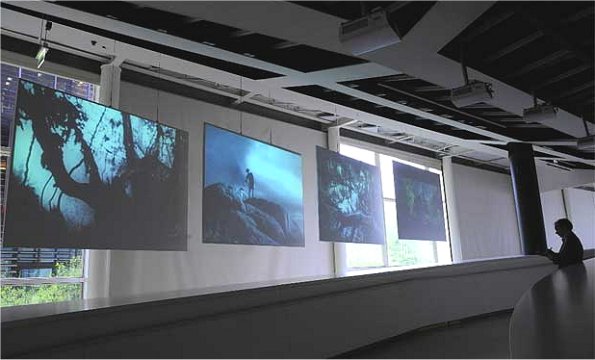
Photograph by: Stephane de Sakutin, Getty Images
A man visits the exhibition "Tarzan" at the Quai Branly museum in Paris,
held from June 16 to September 27, 2009.
The museum organisers say the show aims to unpick
the myth of the archetypal wild hero created in 1912 by the American writer Edgar Rice Burroughs.Tarzan swings out of the African jungle and into France's showcase museum of indigenous art this month, in an exhibition that sets out to illustrate one of modern pop culture's most enduring myths.
The exhibition Tarzan! is an exception for the Quai Branly Museum, set up by former President Jacques Chirac as a centre for the so-called "primary arts" of Africa, the Pacific, the Americas and Asia.
It has little to say about any real African culture, instead focusing on the exotic web of images and mythology behind the King of the Apes and his mate Jane.
"For a good part of the 20th century, popular culture has got its inspiration from the non-European world," said Stephane Martin, director of the Quai Branly museum. "This is a good synthesis of the way popular culture has looked at Africa."
Created in 1912 by Edgar Rice Burroughs, a restless former soldier, prospector and publicity agent from Chicago who never set foot in Africa, Tarzan was an instant success, with over 20 novels translated into 56 languages, thousands of comic strips and dozens of films.
Immortalised onscreen by former Olympic swimming champion Johnny Weissmuller, the image of Tarzan, swinging through the trees with his yodelled cry "Or-ah-uh-ah-aaah-ah-uh-ah-uh-aah!," has remained anchored in the modern imagination.
But Tarzan's jungle realm, populated variously by helpful apes, savage cannibals, tigers, sultry beauties clad in leopard skins and the lost descendants of Roman legionaries, is a purely imaginary product of early 20th century America.
"Burroughs was a fantastic sort of sponge, soaking up all kinds of stories, random facts and images," said Roger Boulay, the exhibition's curator.
He drew on a hodgepodge of influences ranging from the 1893 World's Fair in Chicago, to Charles Darwin's theory of evolution, Rudyard Kipling and the story of Romulus and Remus, twin founders of Rome who were suckled by a wolf.
"It doesn't tell us anything about Africa at all," said Boulay. "What it tells us about is the some of the ways our culture has seen Africa."
The exhibition features photographs, books, original plates from many of the comic strips by masters of the genre like Burne Hogarth, as well as a special stand where visitors can try to win a trip to Africa by imitating Tarzan's famous cry.
There are several extracts from films ranging from Tarzan of the Apes in 1918 to the Weissmuller movies of the 1930s and the 1984 epic Greystoke: The Legend of Tarzan.
The now-proverbial exchange "Me Tarzan, you Jane" does not feature, however. It was apparently a joking comment by Weissmuller that he never actually said onscreen.
But the exhibition shows Burroughs' hero was far more articulate than the tongue-tied hunk of the screen -- son of a British aristocrat who spoke English, French, a smattering of Latin and the language of apes.
The exhibition runs to Sept. 27.
© Copyright (c) Canwest News Service
Find the ERB Connection in this PowerPoint series of photos.
http://www.erbzine.com/mag27/av/OldAmerica.pps
Rebooting Tarzan: Make him fly?
SciFi Wire.com
The celluloid adventures of Edgar Rice Burroughs' Tarzan range from Disney animation to Miles O'Keeffe's frolicking with a naked Bo Derek in the jungle. Perhaps the most iconic is Johnny Weissmuller's portrayal in 12 adventure films from the '30s and '40s. What else is Hollywood to do with such a popular character but reboot it? Having written the script, Stuart Beattie described his new vision of the Lord of the Apes."It's not your traditional Tarzan," Beattie said in an exclusive phone interview on Wednesday while promoting G.I. Joe: The Rise of Cobra. "It's your Pirates of the Caribbean kind of Tarzan. It's fun. It's how a Tarzan movie should be. It's just, because Tarzan's been done so many times, you can't just do the standard retelling of Tarzan again, because everyone knows that story. If you're going to do Tarzan, you've got to do it different than it's ever been done."
Well, we've certainly never seen Tarzan fly before. Speak broken English with a French accent, yes (a la Christopher Lambert in 1984's Greystoke: The Legend of Tarzan, Lord of the Apes). Fly, no.
"[It's going to be] more mythological and supernatural, mythic Africa, where the trees are two or three times the size of trees," Beattie said. "It's that deep, deep, deep, dark, heart-of-Africa jungle that no one's ever been [to], 1930s, period, all that kind of stuff, and really bring that world up into that kind of mythic status, where Tarzan can fly around on all these trees and do amazing acrobatics. I just had a lot of fun with it."
Original Tarzan author Edgar Rice Burroughs probably never imagined his hero performing such feats, and he didn't have film budgets to worry about. He only had the written word and his own imagination. For his part, Beattie feels that Hollywood had exhausted all the source material by the time he got his shot at it.
"It's mainly new stuff, because it's the kind of stuff that Edgar Rice Burroughs, I don't think, could have possibly imagined," Beattie said. "There's certainly nothing like it in the books, so I guess I can't really speak to what he was thinking when he wrote them, but it certainly raises it all up a notch to be like a big, fun summer movie."
Warner Brothers is in talks with The Mummy's Stephen Sommers to direct Beattie's Tarzan script.
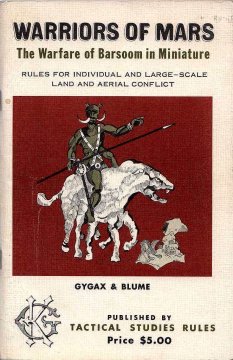
Authors: Gary Gygax and Brian Blume Artwork: Greg Bell |
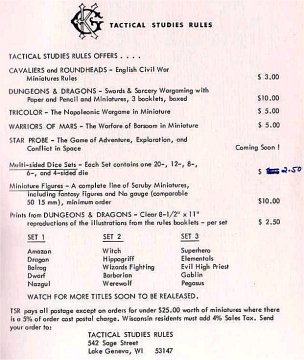
Published in 1974 at Lake Geneva, Wisconsin, USA Format: 56-page, stapled, softcover pamphlet |
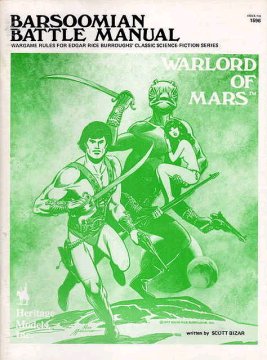 |
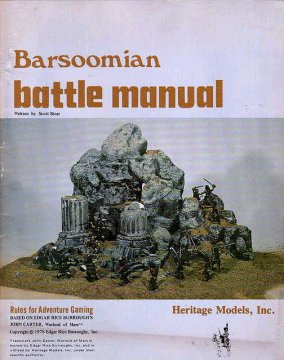 |
| Barsoomian Battle Manual: Rules for Adventure Gaming
2 editions Copyright: 1978 by Edgar Rice Burroughs, Inc. Author: Scott Bizar Artwork in version 1: Russ Manning Artwork in version 2: unknown Place of Publication: Dallas, Texas, United States 50 page softcover booklet |
Introduction: "Few fictional worlds have created the interest that has grown from the Mars of Edgar Rice Burroughs. As a world of constant warfare and adventure, it is naturally of special interest to the wargamer. In this area we are quite fortunate in the amount of information on military organization provided by Burroughs. Unfortunately, we do not have similar information on the relative strengths of the various nations and empires of the dominant Red Race of Mars. Such statistics must be extrapolated from the performance of these nations in their never-ending strife on Barsoom." |
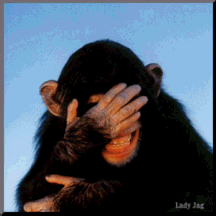





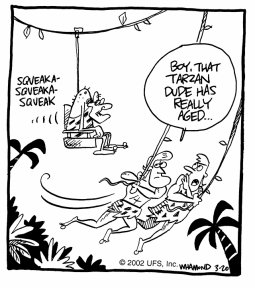
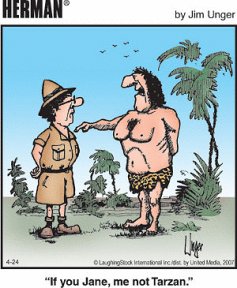
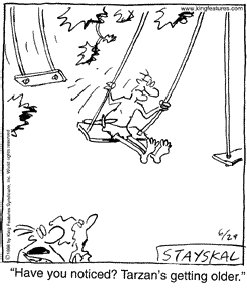

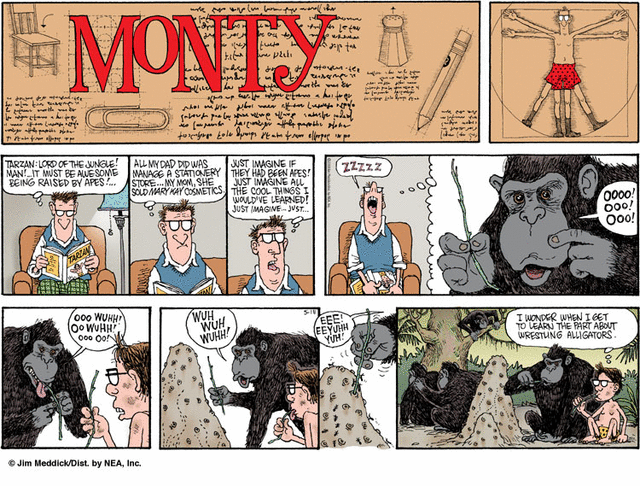
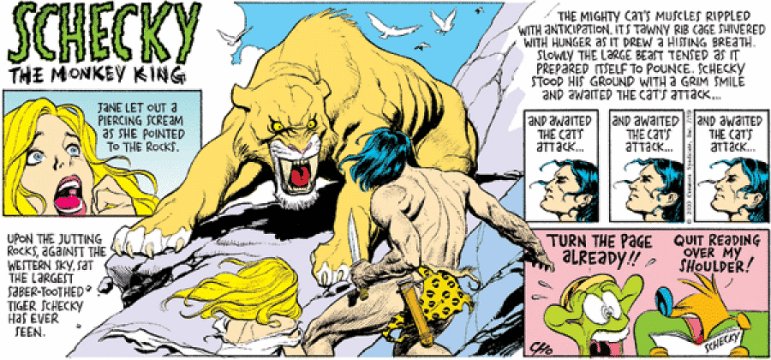
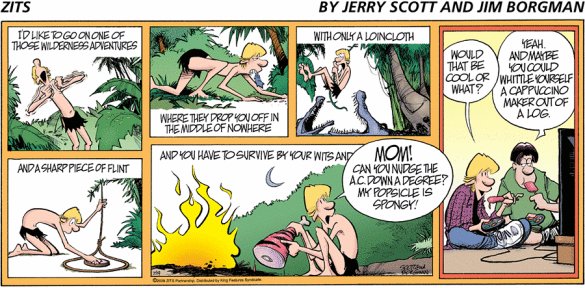
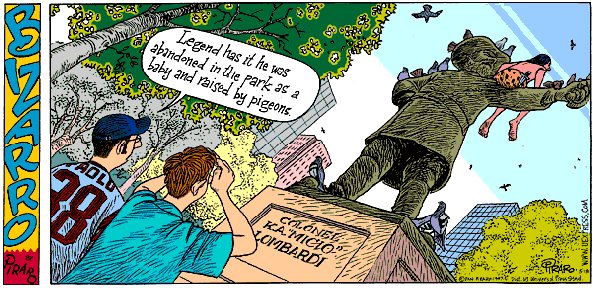

![]()
![]()
![]()
![]()

![]()
BILL
HILLMAN
Visit
our thousands of other sites at:
BILL
& SUE-ON HILLMAN ECLECTIC STUDIO
ERB
Text, ERB Images and Tarzan® are ©Edgar Rice Burroughs, Inc.-
All Rights Reserved.
All
Original Work ©1996-2009/2015 by Bill Hillman and/or Contributing
Authors/Owners
No
part of this web site may be reproduced without permission from the respective
owners.